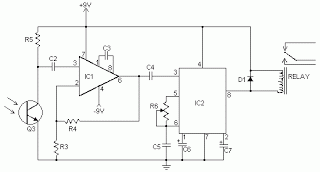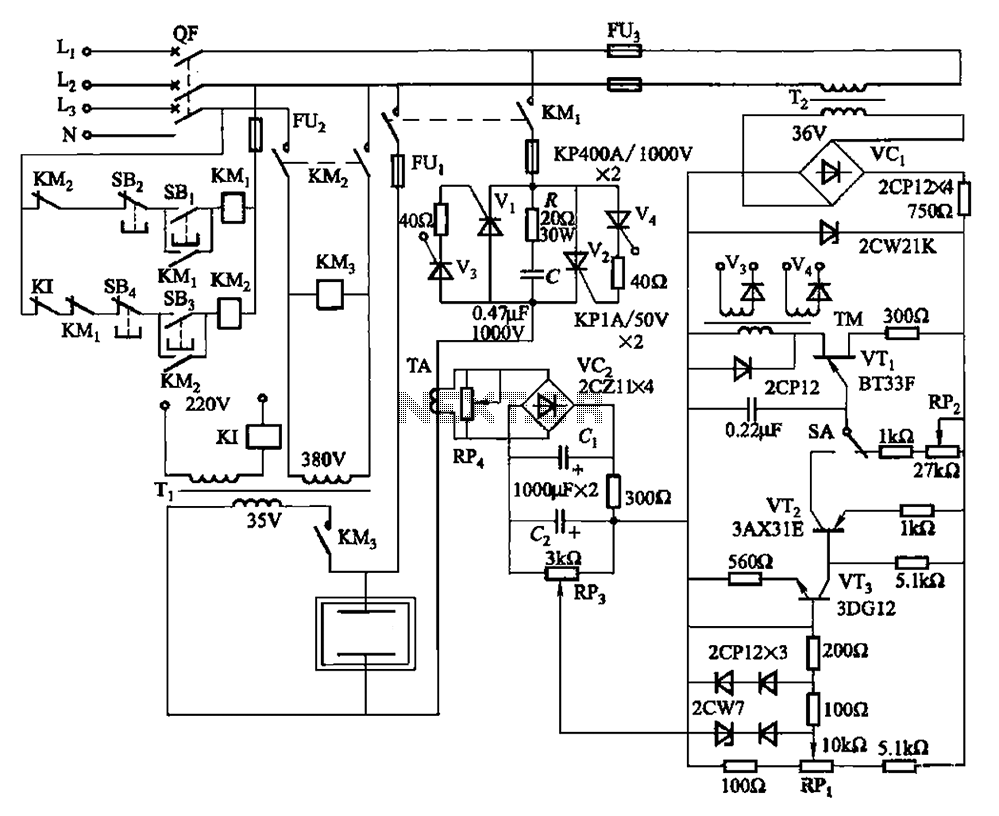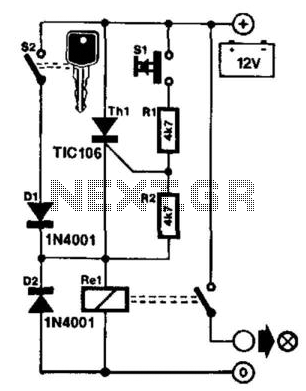
Infared Remote Control Transmitter-Receiver

Here are the schematics for infrared remotes. This remote transmits a tone using an infrared LED. This tone is decoded by the receiver. Since the receiver only switches when it "hears" the tone, there are no accidental activations.
The schematic for the infrared remote control system consists of two main components: the transmitter and the receiver. The transmitter section includes an infrared LED, which is responsible for emitting modulated infrared light. This modulation corresponds to a specific tone or signal pattern, typically generated by a microcontroller or a simple oscillator circuit. The infrared LED is connected to a current-limiting resistor to ensure it operates within its specified current range, preventing damage from excessive current.
The modulation frequency is crucial for the operation of the system, as it defines the tone that the receiver will recognize. Common modulation frequencies for infrared remote controls are in the range of 30 kHz to 40 kHz, which helps to minimize interference from ambient light sources.
On the receiver side, a photodiode or phototransistor is utilized to detect the incoming infrared signal. This component is sensitive to the modulated light emitted by the transmitter. The output of the photodiode is typically fed into a bandpass filter that isolates the modulation frequency, allowing only the desired tone to pass through. This filtering process is essential for ensuring that the receiver only activates in response to the specific signal from the transmitter, thereby preventing accidental activations due to stray infrared signals.
The filtered signal is then processed by a decoder circuit, which is often implemented using a microcontroller or a dedicated IC designed for infrared signal decoding. The decoder interprets the modulated signal and generates a corresponding output, which can control various devices, such as TVs, air conditioners, or other consumer electronics.
Overall, the infrared remote control system is an efficient and reliable method for wireless communication, characterized by its simplicity and immunity to accidental activations, due to the specific tone detection mechanism employed in the receiver.Here`s schematics for infared remotes. This remote transmits a tone using an infared LED. This tone is decoded by the receiver. Since the receiver only switches when it "hears" the tone, there are no accidental activations. 🔗 External reference
The schematic for the infrared remote control system consists of two main components: the transmitter and the receiver. The transmitter section includes an infrared LED, which is responsible for emitting modulated infrared light. This modulation corresponds to a specific tone or signal pattern, typically generated by a microcontroller or a simple oscillator circuit. The infrared LED is connected to a current-limiting resistor to ensure it operates within its specified current range, preventing damage from excessive current.
The modulation frequency is crucial for the operation of the system, as it defines the tone that the receiver will recognize. Common modulation frequencies for infrared remote controls are in the range of 30 kHz to 40 kHz, which helps to minimize interference from ambient light sources.
On the receiver side, a photodiode or phototransistor is utilized to detect the incoming infrared signal. This component is sensitive to the modulated light emitted by the transmitter. The output of the photodiode is typically fed into a bandpass filter that isolates the modulation frequency, allowing only the desired tone to pass through. This filtering process is essential for ensuring that the receiver only activates in response to the specific signal from the transmitter, thereby preventing accidental activations due to stray infrared signals.
The filtered signal is then processed by a decoder circuit, which is often implemented using a microcontroller or a dedicated IC designed for infrared signal decoding. The decoder interprets the modulated signal and generates a corresponding output, which can control various devices, such as TVs, air conditioners, or other consumer electronics.
Overall, the infrared remote control system is an efficient and reliable method for wireless communication, characterized by its simplicity and immunity to accidental activations, due to the specific tone detection mechanism employed in the receiver.Here`s schematics for infared remotes. This remote transmits a tone using an infared LED. This tone is decoded by the receiver. Since the receiver only switches when it "hears" the tone, there are no accidental activations. 🔗 External reference





